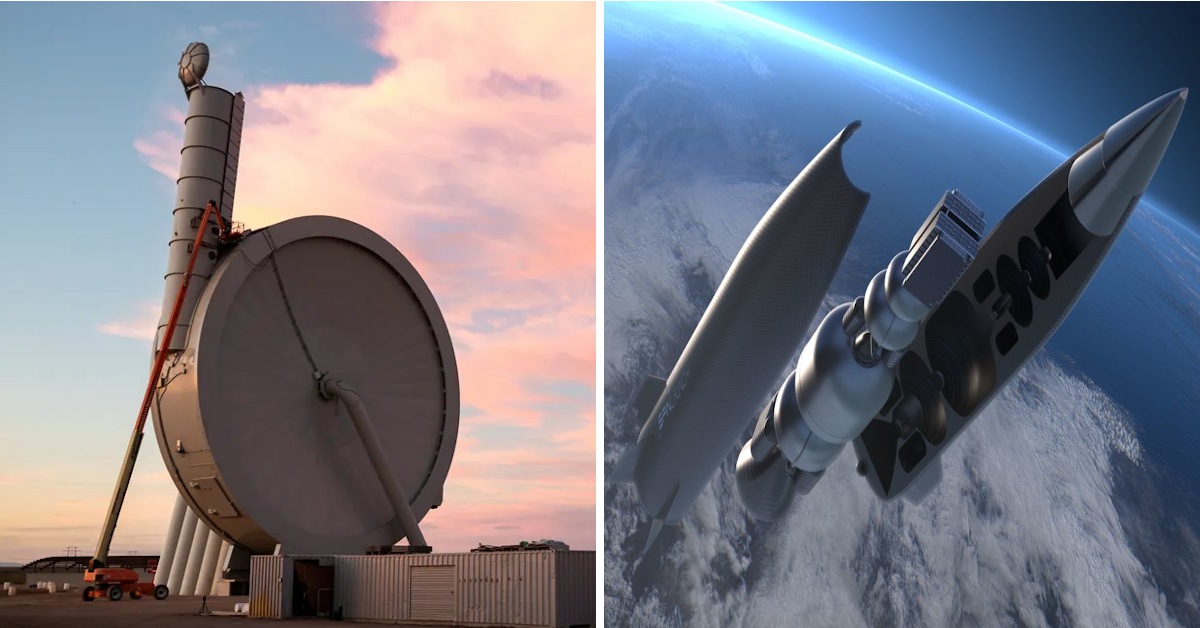US-based startup SpinLaunch has just launched some scientific equipment into the sky by using a giant slingshot.

SpinLaunch has teamed up with NASA and other partners to find out whether slingshotting objects into suborbit, and eventually to orbit, could be a viable alternative to traditional rockets, IFL Science reports.
This was the tenth successful fling by SpinLaunch using their Suborbital Accelerator located in the New Mexico desert. Beside the round number, the launch was also special in that, for the first time, a number of payloads owned by NASA, Airbus, Cornell University, and satellite delivery company Outpost, were flung towards space with the aim to establish whether the sensitive scientific equipment onboard could survive the intense G-force created by the accelerator.
The Suborbital Accelerator spins the object at approximately 8,046 kilometers (5,000 miles) per hour in a vertical 12-meter (39-foot) tall centrifuge. Once the object reaches the desired speed, it is launched into the sky by flinging it out through the accelerator’s chimney.
Like this.
NASA’s payload included a Data Acquisition Unit (DAQ) equipped with a gyroscope, two accelerometers, a magnetometer, as well as temperature, pressure and humidity sensors. The DAQ was successfully recovered upon landing and the equipment appears to have withstood the hurly-burly of a spinning sling-shot launch. So, just like us, the scientists can’t wait to look at the data gathered.
“The data and insights collected from flight tests will be invaluable for both SpinLaunch, as we further the development of the Orbital Launch system, and for our customers who are looking to us to provide them with low-cost, high-cadence, sustainable access to space,” Jonathan Yaney, Founder & CEO of SpinLaunch, said in a statement.
SpinLaunch has not yet to send an object into orbit with the help of its inventive launch system, but that’s definitely their ultimate goal. To reach it, the company will have to build a centrifuge three times larger than its current test system. Nevertheless, previous launches by SpinLaunch have already sent objects to heights of 7,620 meters (25,000 feet) (no information was released about the altitude of this latest test run).
The concept of launching objects into orbit using an astronomical slingshot might seem a bit far-fetched at first, with even Yaney himself admitting in an interview for CCN, that it “shares a lot more in common with maybe, like, an amusement park ride than it does with a rocket.” But then, this novel launch method does have a big advantage: it requires less fuel and, in turn, costs less money per launch. Plus, the slingshot can be used many times.
According to Yaney, to build a traditional rocket, thousands of complex components are needed that are then stretched to their mechanical limit during flight to eventually end up as space junk or, in a better scenario, undergo costly refurbishments. A centrifuge, on the other hand, can create massive amounts of energy close to the ground, thus allowing the use of heavy, industrial components while the centrifuge can be reused again and again. The developers hope that these factors together will greatly reduce the overall cost of a mission.

Such a feat is theoretically possible, Olivier L. de Weck, a professor of astronautics and engineering systems at MIT told CNN, but there are engineering problems that SpinLaunch will need to solve. Take SpinLaunch’s centrifuge, for example: it could whip around the satellite inside at 10,000 G’s or more — over 10,000 times the force of Earth’s gravity.
“A CubeSat would be torn to shreds,” de Weck said of the small, standardized satellites that are becoming increasingly popular in the public and private sector.
SpinLaunch acknowledges that the intense G-forces are an obstacle and says it has been looking at various hardware and components to see how they can withstand these forces. And, to be clear, even the company admits that humans will never be going into space on a rocket launched this way, as the G-forces would just crush the human body. However, the project could eventually mean a cheaper alternative of getting things into space, and the start-up therefore hopes to start offering customer orbital launches by 2025.
